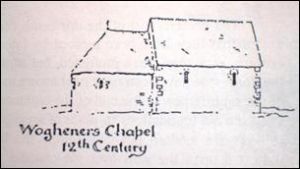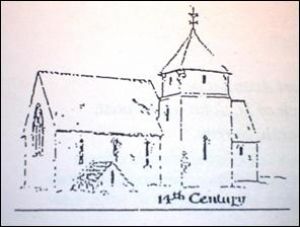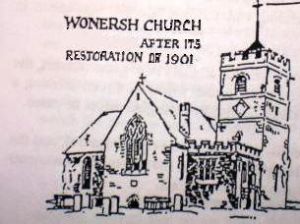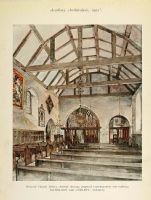|
Parish History and Heritage
This section of our website describes the history and heritage of the Wonersh Church, our parish, and our connections to the village. There is a wealth of information covering the church building, our records and registers, and the history of our church patronage and leadership.
We are indebted to David Legg for researching and producing this record of our church.
Wonersh Church History - A summary
The church of St John the Baptist, Wonersh, probably originally Saxon, was re-built shortly after the Norman conquest in the eleventh century with additions made until the fifteenth century. Major rebuilding took place in 1793 and restoration in 1901; however the core is still the Norman church. The churchyard was closed for burials in 1861, and the same year a new churchyard opened at Shamley Green, which continued as the churchyard for Wonersh until 1900 when a new cemetery was opened near Blackheath.
For most of our history the Parish has been in the See of the ancient Diocese of Winchester in the Deanery of Stoke. The ancient Parish boundary was reduced in 1881 when Shamley Green became an ecclesiastical parish in its own right. The year 1893 saw the opening of St Martin’s Blackheath within the parish of Wonersh, forming into the separate parish of Blackheath and Chilworth in 1937; Blackheath was rejoined with the Parish of Wonersh in 1998. From 1927 the Parish of Wonersh became part of the newly formed Diocese of Guildford. In recent years the patronage of the church has rested with Selwyn College, Cambridge.
|
The oldest part of the present church is probably the north wall of the nave, this probably being part of the original pre-Conquest chapel built around 1050 if not earlier. The stem of the font, which is an archaic band of ribbed work on coarse grit stone, may also date to pre-Conquest times. The Saxon church was destroyed and rebuilt after the Norman Conquest.

In the 12th century the first recorded church was a Norman Chapel of the Hamlet of Wonersh or Wogheners, when it formed part of the parish of Shalford (or Scandeford), one of three churches in the Manor of Brunlei or Bramley mentioned in the Domesday Book. In 1224 it is spoken of in the Patent Rolls of Henry III as a chapelry. It probably consisted of a simple nave and small sanctuary of a rustic and unpretentious style.

In the early part of the 13th century the tower was added and the chancel rebuilt on a large scale. Wonersh constituted a separate parish sometime before 1295 being mentioned as an “ecclesia” or parish church in the Patent Rolls of Edward I. Soon after the chancel was rebuilt, the church was enlarged by the addition of a chapel at the south-east corner, probably dedicated to the Blessed Virgin. In the early 15th century the nave was apparently re-roofed and the floor area almost doubled by the addition of a south aisle under a separate high gabled roof. The easterly part of the south aisle was known as the Tangley Chancel. An arch was cut through the south wall of the Chancel. |
|
|
|
|
In 1901 it was decided to refit the church and the chancel was restored to its original length and height and was re-roofed. The north chapel was reclad in stone and the roof and windows were copied from old paintings. The western half of the sacristry, filled in when the north chapel was built, was opened out, with arches constructed to support the chapel altar. The various lath & plaster partitions were removed as were the ceilings in the chancel and nave. A small porch was added on the west wall of the nave in 1913, and the church was first lit by electricity in 1927.
 
In 1934 Wonersh House was demolished, and afterwards the grounds adjacent to the church gifted in Trust to the Village, to be known as Church Green Trust. In 1937 the Parish of Blackheath and Chilworth was formed, comprising parts of the parishes of Wonersh, Shalford and St Martha’s. In 1944, just 7 days before D Day, the Queen Mother (then wife of George VI), in her capacity as President of the UK Red Cross, attended a service at St John's Wonersh in commemoration of the gift by Mrs Beatrice Cook of her family home, Barnett House, to the Red Cross.
|
|